 Selling a book to someone who has just enjoyed reading one of your books is the easiest book you will ever sell. In business terms it’s called “picking the low hanging fruit”. If you have another book out, then it’s easy to do. You just put a link to the next book in the backmatter and the reader clicks on it and the sale is as good as made. But what if your next book isn’t out for a while? How will the reader know when it is out? You can’t expect the reader to go onto Amazon once a week to check and they may not follow you on social media, so how do you communicate with that satisfied reader 3 months, 6 months or even a year from now?  No matter which book marketing guru you read, they all agree that email lists are one of the top 4 ways to sell books (the other 3 being ads on Amazon, Facebook and Bookbub). So, why do so few Indie authors use this method to communicate with readers and boost their sales? Every Indie author selling in the 6 figure income bracket (and higher) has an email list as long as the Norwegian coastline and they use it every time they launch a new book (and at other times in between, of course, but more of that later). It’s why they are 6 figure plus income earners. That should tell every Indie author everything they need to know about email lists. Yet still there is an incredible amount of resistance from Indie authors to building and using them.  Here are some of the reasons that a lot of Indie authors give for not using email marketing (in no particular order), with our response beneath. "I don’t sign up for email lists, so no one would sign up for mine." You are not your readers. Lots of readers sign up for as many lists as they can because they are always looking for new book recommendations. "They are a lot of hard work to build and maintain." True, but without hard work, nothing happens – especially sales. "It is expensive to build an email list." Not true. While it isn’t free, as a marketing tool it is far cheaper than advertising (I’ll cover costs later). "I don’t have time for building and maintaining email lists." Nor did those 6 figure income authors when they started out, but they found the time and that’s why they are now 6 figure plus income authors. If you have your own pet objection which we’ve missed out, put it in the comments and we’ll be happy to respond to it.,  If, at this stage, you are still saying “email lists are not for me” then fair enough. Thanks for reading this far and we’ll get on with writing this blog for the benefit of the authors who want to make some decent money from their books. OK, now they’ve gone, we’ll admit that not everyone who uses email marketing is going to reach the dizzy heights of 6 figure plus incomes. But they can get to the mid to upper 5 digit levels. We know this is possible because we are already achieving that for our authors. So, what do you need to start? Well, you need something to attract readers to your email list. Some people call these “freebies”, some call them “reader magnets” and I know of one person (who I will name later) who calls them “cookies”, because she hands them out like cookies. I’m going to call it “content” because that covers a whole raft of possibilities. Some of these are:
 There will be some work in creating that sort of content just for it to be given away for free but, to use an old British term, they are a sprat to catch a mackerel. If your email list grows at any sort of speed you will want to automate as much of the work as possible, or you really will find yourself drowning in emails, so the next few paragraphs talk about the businesses that can do that for you. You need an email list management service. There are many of these around, some of which have free packages with limited functionality, but even if you need to subscribe they have packages starting from around $9 a month (£7 – price correct at time of writing). Mailchimp and Mailerlite are the market leaders but there are smaller providers. A word of warning. Having used one of those companies I can’t say they are not the most user friendly when it comes to setting up automated responses and emails. You will have to spend some time watching their tutorials and even then you may have difficulties and have to email for support..  Then you need a delivery system to get your content to people so you can harvest their email address (ethically and legally, of course) for transfer to your email service. If you want to follow best practice you will also want to deliver new content to existing subscribers. There is no doubt about the market leader in the delivery field. It is Bookfunnel and we have no hesitation about mentioning them. All their packages cost money and you will have to go in at above the most basic subscription level if you want to capture email addresses. What Bookfunnel calls “Mid-List Author” has a subscription price of $8.33 a month or $100 annually (£6.50 and £78.33 - prices correct at time of writing) and that is the minimum package you need. When you compare those prices with what you might have to pay for advertising, you can see that email marketing is far more economical. You can easily spend $100 a week to run a Facebook or Amazon advertising campaign.  The rest of this blog is devoted to how you use Bookfunnel to build your email list from scratch and you have to get a little bit creative to make that work. We’re not going to go into too much detail. You’ll find lots of videos on the Bookfunnel website to help you. The first way to capture emails is “Group Promos”, which offer a range of books by different authors for free, capitalising on the fact that they give readers a choice of content. In these terms a book doesn’t have to be a full length novel, but it usually excludes extracts and sample chapters. The second is more advanced and is “Author Swaps” where you promote a single book by another author in order to generate sales, and they do the same for you.  Bookfunnel has a built in system for preventing cheating and not keeping your end of the promotional bargain. If you don’t promote other authors the way they are promoting you, you’ll find it hard to join a group promo the next time. Bookfunnel calls it “reputation”, but that is all we are going to say on the subject. Feel free to email us if you want to know more. Every month there are a number of Group Promos in the most popular genres that allow a newbie to join without an established “reputation”. Of course, the group will mainly be made up of other newbies, but that doesn’t matter. You are all in the same boat and are all there for the same reason – to get email addresses. To join a Group Promo you need at least one bit of content to give away and most promos are capped to a set number of books per author (typically 2 - 4) so that no one author dominates the promo.  Now, if you don’t have an email list, how do you actually send out the link to the promo? Some promo organisers (anyone can be one of those) even insist that you have a minimum number of email addresses in your list in order to join the group. This is where you have to get creative. For a start, the promo organiser has no idea how many email addresses you have in your list. I’ll just leave that hanging there and let you decide what to do with it. Secondly, all anyone is really interested in is those clicks, so it doesn’t matter where the reader saw the link that takes them to the promo. It could have been in an email or it could have been written in crayon on the back of the door of a public toilet (public bathroom if you’re American). So long as the click is made, nobody is any the wiser. Nor do they really care.  So, instead of using your non-existent email list, you post the link on your social media instead. Don’t worry if you have only a small number of followers (I’d suggest a minimum of 1,000 on Twitter/X). You only need a handful of clicks in order to start to establish your reputation and you will also get an email address every time someone chooses your content as the one they want to download. Now, you do need to be a little bit creative about how you post the promo link. Just saying “free books” and inserting the link isn’t going to attract many link clicks. There is a video available on Bookfunnel on what sort of content to use in your promo emails or posts, so I’m not going to repeat the lesson here. Group Promos typically run for between a fortnight to a month and I suggest you join 2 groups a fortnight but no more. Joining too many promos at once could lead to things becoming unmanageable.  There is a reason for joining two groups, though. I’ll call the two different groups Promo A and Promo B. When you start to get email addresses for downloads of your content as part of Promo A, you can send the link for Promo B to those addresses, providing the promo is still running. And vice versa for Promo B, of course. The advantage of doing that is that you are sending the promo link to people you know are likely to click on it – because that’s how you got their email address in the first place. If you get 10 email addresses from each promo, 20 in total, and you do that twice a month, that may give you 40 email addresses. If your content was a series starter, there is a good chance that 50% of those people will then read through the rest of your series. If your book is a trilogy, that’s 20 sales of Book 2 and 20 of Book 3. And every month you are likely to get the same results again, so you are selling books you wouldn’t have otherwise sold, at the same time as you build your email list for future marketing campaigns. That will more than cover the cost of your Bookfunnel subscription. But don’t forget to put links in all the right places in your series starter. And if you put some different content onto Bookfunnel, you can put links in all the books in the series to get more sign-ups in exchange for that free content. That is called “organic” growth.  But, more importantly, you now have 40 email addresses to which you can send the next promo to. You can still use social media for your promos too, as that increases your “reach”. In fact, I would continue to do that even when you have 10,000 addresses in your email list. Now you have to learn how to use those email addresses in order to build engagement with those readers. You will notice that I didn’t say “sell your books to those readers” and that is because selling is the last thing you should be doing. What you should be doing is using your email list to send out newsletters which build engagement. The sort of engagement that makes the reader feel they are part of an exclusive club. And that means providing them with exclusive content. This turns a reader into a “superfan”. Not only will they buy everything you care to write, but they will tell everyone they know about your books at every opportunity. These people really exist, and newsletters are the way they are found or created.  Now, I’ll be the first to admit that I’m not an expert in the craft of newsletter writing – but I know someone who is. You will recall that I mentioned someone earlier in the blog who refers to her free content as “cookies”. That lady’s name is Tammi Lebrecque and she is one of the acknowledged gurus of email book marketing. She has written two books on the subject and they are called “Newsletter Ninja” and “Newsletter Ninja 2”. I highly recommend reading both books BEFORE you start trying to build your email lists, as they will save you a lot of time and heartache. The first book gets into the nuts and bolts of list building and engagement and the second book takes a closer look at what makes a good “cookie”. So, that concludes our brief (or maybe not so brief, looking at the word count for this blog) tour around emails and list building. It really is one of the foundation stones of a marketing strategy and if you don’t have an email list it is unlikely that you will ever reach the dizzy heights of a 6 figure income. If you have enjoyed this blog, or found it informative, then make sure you don’t miss future editions. Just click on the button below to sign up for our newsletter. We’ll even send you a free ebook for doing so.
0 Comments
 One of the most time consuming parts of advertising with Amazon is having to do all the research to find those hundreds of keywords that the Amazon Ads gurus tell you that you need in order for your ad to show up in searches. I’m not decrying the advice, because you really do need all those keywords to run keyword targeted ads. I’m only bemoaning the fact that it takes so long to find the right keywords. Tools such as Publisher Rocket can help save time on this research, but if you haven’t got that and don’t want to subscribe to it, you are stuck with doing trial and error research to find what sort of search terms produce the best results for books like yours. But just suppose, for a moment, that there was an easier way to advertise your book than using keywords. And, just suppose some more, that you get better sales using this approach. Is that something in which you might be interested? If it is, then read on.  Now, for a moment, I want to take you away from the world of book marketing and into advertising products in what is called “pay per click” or PPC marketing, which is used both on Amazon and places like Google Ads to advertise a wide range of products. This is a huge area of marketing, generating $ billions per year in sales and the people who market in this area know how it works. They don’t want to do hundreds of trial and error searches to find out what keywords to put into their ads. They haven’t got time for that. They have money to make and, in their world, time is money. This is where we get our inspiration. If one of these PPC marketers wants to sell an electric drill, for example, they don’t go looking for synonyms for electric drills that could act as keywords. They also don’t put in random search terms for electric drill type products that may result in an electric drill coming out top of the search results.  No. What they do is tell Amazon Ads “When someone searches for an electric drill made by Acme, show them my electric drill as well.” And it works. It has probably happened to you. It has certainly happened to me. When I searched for Ping golf bags recently, I was also shown a lot of golf bags that weren’t made by Ping but which might also suit my purpose. Some of those were cheaper than the Ping bags and it was one of those that I bought. And very nice it is too. So, substitute a book title or an author name for “Ping golf bag” and that is how this system works for authors.  It is called “product targeting” and it needs far fewer searches to find suitable targets than hunting down 2 or 3 hundred keywords. And you can be very specific about which products you want to target. because you use the product’s ASIN to identify it, rather than phrases that can be either too broad or can be misinterpreted. If you do happen to subscribe to Publisher Rocket, their competitor analysis tool will also speed up this process, but for the purposes of this blog I’ll assume you aren’t a subscriber. Where “Science Fiction” can produce thousands of potential books in the search results, some of which are like yours but many of which aren’t, ASIN 123456ABCD can produce only one result – and that result is a book that would sit comfortably right next to yours on a bookshelf.  That’s providing you have selected the ASIN with care, of course. If you just pick a hundred books from the best-seller list and include them in your ad, your ad won’t work because the results won’t be relevant to the readers - and Amazon hates irrelevancy in ads. It hates it to such a point that you will have to pay more just for your ad to be seen. You will also pay for a lot of clicks that could never result in sales because the wrong readers are seeing your books. So, what do you have to do to create a product targeted ad? First of all, you have to select your “targets” and those are the books like yours that people are searching for. Let their authors go through all the pain of finding the right keywords. All you have to do is say “When this book appears in search results, show them my book too.”  So, you do your searches by category (genre) and sub category to find books that are similar to yours. If you write “space opera” you are looking for space opera books specifically, but you might also look for neighbouring categories such as space marines, space military, deep space exploration etc whose readers might also buy your books. But just a health warning here – if you stray too far from your own book’s category your readers may see your book as less relevant to them, with all the consequences that will bring regarding how Amazon will treat your ads. When we do this we look for books that are doing well in the sales rankings for the subcategories in which they are listed, so in our example we would be looking at “science fiction – space opera” books that are doing well in the charts.  We don’t want the big names though. Targeting Isaac Azimov probably isn’t a good idea, because readers of his books may be prejudiced against Indie authors. Just an aside here, the reading world seems to be dividing into three camps these days. There are those who will never read books by an Indie author, no matter how good the reviews for the books are. There are those who are only reading Indie authors these days because they know they can get good books at better prices from Indies. And there are those who will read both but will tend towards selecting the Indies that are higher up the sales ranks or whose books are getting better reviews. As an Indie author you are better off looking for the Indie authors who are doing well, because their readers aren’t so prejudiced against books by Indie authors. Our starting point is the best seller lists, but you can also use the sales rankings that are shown on the product pages if you are using titles/authors provided by Publisher Rocket.  And don’t forget to include your own books as targets, especially if you are advertising a new book or you have a new series out. Readers may be searching your book titles and your author name, so you want to be sure your new book shows up in the results, not just your old books. Then you copy and paste all the ASINs into a document for later use. How many ASINs do you need? Well, you are looking for the books that are selling well and which will be appearing in readers’ searches, so perhaps 20 to 30 books. If you can find 30 books by different authors then that is great. Many readers search for their favourite authors because they know they’ll get lots of other suggestions to pick from in those “also bought” and “recommended for you” lists. Once you have your list of ASINs, it’s time to go across to Amazon Ads and set up your ad. There is a second way of selecting targets and it is very much quicker.  Just as with keyword targeting, Amazon Ads will suggest products (books) that it considers are similar to yours and you can select your targets from that list. However, a word of caution if you would like to go that route. Amazon doesn’t understand your book as well as you understand it. The targets it selects for your book are not necessarily going to be the best targets. They are going to be the books that Amazon thinks are the best targets and that may be very different. Don’t just accept them willy-nilly. Check them out first to make sure they are a good match for your book. If you don’t you may be doing more harm than good by accepting them as targets.  When you set up a “Sponsored Product” ad you will be familiar with selecting manual targeting and keyword targeting. This time you will be using different options. You will still be selecting manual targeting, but now you will need to select “product targeting”. The options you are now presented with are similar to those used for keyword targeting. You need to select “Individual products”, “Enter list” and click on “expanded” for matching. If you want to take Amazon’s suggested products as your targets, then you don’t have to use the “Enter list” option. Using “expanded” matching allows other books by the same author to be selected by Amazon, increasing your range of suitable targets Now all you have to do is paste your list of ASINs into the target box (or select your targets from Amazon’s list of suggestions) and enter them.  Which brings us to bidding strategy. Many gurus that advise on keyword targeting tell you to bid low. This is because you are using hundreds of keywords and if you set high bids you’ll burn through your budget very quickly. So, they advise you to use custom bids and default bids which conserve your budget but will still result in your ad being seen. When you are product targeting the bidding strategy is the opposite. In PPC marketing of this sort, you are in a dog fight for visibility. You have a much smaller number of targets, so you have to make sure your books are seen alongside them. It is a real auction and the only way you can win is to outbid the competition. So, not only do you select the suggested bids, you actually need to increase them. We usually add 5 pence (5 cents) to each bid. Even that may not be enough, so there is some trial and error here. We have seen suggested bids that are so high we would struggle to make any profit from the ad. We tend to delete those targets for ‘standalone’ books, but if our book is part of a series we may decide we can make enough profit on read throughs to the rest of the series, so we aren’t too bothered by a high bid for Book 1. So, does it work? Yes it does. Sales are better than we get for keyword targeting, which is what this is all about. Our return on advertising spend (ROAS) is higher when we take KU reads and read throughs for the series into account, which is the only true picture of advertising profit and loss. Which brings us to analysing results.  It is the nature of PPC marketing of this sort that your ad will get a lot of clicks, but not all clicks will result in sales. Some ASINs will get you lots of sales and some will get you none, depending on how well matched your book is to your target. This is why you have to select your targets with care and not use the “throw lots of targets in and hope for the best” philosophy that you can get away with in keyword ads. It is important to cull ASINs that aren’t bringing you sales because, unlike keyword ads, these could be costing you a lot of money every time they are clicked. That means checking your advertising results data at regular intervals to see which targets are performing and which aren’t and switching off the poor performers. As you are targeting specific books, your ads will become dated after a while. Books that are riding high in the best seller charts today may be bumping along in the gravel in 3 months’ time and won’t be showing up very high in the search results, even when the searches are done on the author’s name. This means shutting down your ad when sales start to drop and setting up a new ad with new targets. The longevity of targets will vary, but unless you are targeting a best-selling author (not advisable anyway because the bid costs are too high) you should be shutting down your ad when it gets close to the “break even” point in terms of its ROAS. You don’t necessarily have to create a brand new ad every time. By analysing your results data, you can identify targets that are no longer performing and switch them off, replacing them with some new targets. But eventually this piecemeal approach may make it more difficult to analyse your results, so starting afresh from time to time is advisable.  As with all things, you don’t have to take our word for the effectiveness of this tactic. Run your own trial. Take a book that you advertised using keyword targeting and which has had reasonable sales and use its data as your baseline, then try running an ad for a month using product targeting and see what happens. If it doesn’t result in better sales, email us and let us know. So, our main takeaways from this blog:
If you have enjoyed this blog, or found it informative, then make sure you don’t miss future editions. Just click on the button below to sign up for our newsletter. We’ll even send you a free ebook for doing so.  What the difference is between a book’s Amazon’s sales ranking, it’s position in the Amazon Best Seller lists and the book’s actual popularity may not seem like a big thing, but it can affect the way your marketing strategy works. In fact, understanding the differences can make the difference between you selling a few books and selling a lot of books. It can definitely increase your KU downloads, if your book is enrolled in Kindle Select. You may think that sales rankings, best seller lists and popularity are just different names for the same thing. You would be wrong.  Popularity, in Amazon’s terms, is very different from the first two and it has a far greater impact on how visible your books are on Amazon. Visibility is just another way of saying “free advertising”, because books that are visible are likely to sell, whereas a book that isn’t visible can’t sell unless a reader is looking for it specifically, which is unlikely if they haven’t heard of it. So, let’s take each of those terms in turn and unpack them to see what the differences are. Sales ranking is a very volatile feature. First of all, it is relative to the millions of other books that are listed on Amazon. Secondly it changes by the hour, depending on who buys what and when. A book that has a sales rank of 1,000 today may be down at 5,000 tomorrow and 10,000 the day after. But that doesn’t mean it isn’t popular. Some people think that KindleUnlimited (KU) downloads don’t count for much when it comes to sales ranking, but this is an urban myth. A KU download is treated the same as the sale of a book, ie 1 KU download = 1 sale.  The problem is that the value of sales diminishes by 50% each day. So, a sale today is only counted as ½ a sale tomorrow and will only be counted as ¼ of a sale the day after. This is part of the reason that sales rankings are so volatile. If you sell 10 copies of your book today but none tomorrow, then today’s 10 sales are only worth 5 sales tomorrow and your sales ranking plummets. This means that promos have a disproportionate impact on sales ranking when they end. All those books that were downloaded during the promo period are only worth a fraction of what they were the day after the promo ends. A sale on day 1 of a 5 day promo is only worth 1/16 of a sale by the time the promo has ended.  Best seller lists are driven by sales rankings, so they are just as volatile. Yes, you may have earned that elusive brown “best seller” tag for your book, but you may only be at number 99 for an hour before dropping out of the list, because the lists are limited to the top 100 books. However, the lists are category specific, so even low sales in some niche categories can keep you in the best seller lists for days, weeks or even months. But those sales levels will never get you into the Kindle Store best seller list, which is dominated by the high volume sellers. By contrast, popularity isn’t calculated hourly, like sales rankings and best seller listings. Popularity is calculated as a 30 day rolling average. What’s more, your sales on day 1 don’t lose their value on day 2, 3, 4 etc. 100 books sold on Day 1 is still worth 100 books sold on day 30. It is only on day 31 that they drop out of the calculation. BUT – and it’s a big but for a reason – KU downloads aren’t counted at all. I’ll get to that reason later.  Unlike the bestseller rankings, popularity rankings don’t cut off at 100. If you are patient enough to keep scrolling, you could find out which is the 1 millionth most popular book on Amazon. If a book has made just one sale it will be in that list somewhere. The popularity listings aren’t easy to find on Amazon, so I’ll provide an easy to use guide for you to download. But viewing the listings isn’t the important part anyway. Very few readers even know they exist or how to find them. The important part is how Amazon’s algorithms use the popularity data to make books more visible. Promotions can play a big part in that visibility too, because they have so much influence on a book’s popularity during the rolling 30 day period within which the promo is running..  Amazon doesn’t like spikes in sales, which you often get with promos. They want to see consistency in sales. Which is why popularity is part of the algorithm and sales rankings aren’t. If your book is selling consistently even at a low sales rank, it can find its way into the algorithm and will be made more visible. For example, when people do searches, the results aren’t presented to them in sales rank order, they are presented in popularity order. So, if your book is more consistently popular than the No1 best seller, it will be more visible while the best seller is ignored, especially after the best seller starts drifting down the charts. Yes, your newly self-published book could appear higher in the search results than Harry Potter or last year’s Jack Reacher (but not this year’s Jack Reacher, because that will still be popular). The other way visibility is improved is through appearing in the “also bought” and “recommended for you” listings that appear when someone is actually viewing the page of a specific book.  Don’t underestimate the value of those listings. People like to read what other readers are reading, so the “also bought” list is particularly influential. And some people buy solely from the “recommended for you” lists because they know that their buying history is telling Amazon to show them the sort of books they like to read and it saves them having to do searches to find their next book. So, popularity feeds into popularity. Because if your book appears in those listings they will sell more copies - which indicates that they are still popular. So, you are into a virtuous circle. This is also why the relevance of keywords is so important in Amazon Ads these days. If you are getting lots of impressions but few clicks, it means that the ad isn’t appearing as relevant to readers. If you are getting clicks but few sales, that also tells Amazon that the keywords you are using aren’t relevant to the readers who are seeing the ad. If they were, more readers would be buying the book.  And relevance is important when it comes to your book being displayed in the “also bought” and “recommended for you” lists, because if the algorithm doesn’t think your book is relevant for the reader, it won’t be displayed. Relevance and popularity work hand in hand. So, all those broad targeted, scatter gun approach keywords that some authors use in their ads are actually harming the sales of the book, not helping them. The ad may make a few sales, but it won’t benefit from increased visibility, because the algorithm can’t work out its relevant audience. Now, to that reason why KU downloads aren’t included in the popularity calculations.  Essentially, the popularity list is about selling more books so that Jeff Bezos becomes richer. KU downloads don’t earn Mr Bezos anything. KU has its own popularity listings based on books that are downloaded, but including KU popularity data in with ebook popularity would skew the picture. The ebook popularity data is fed through to make recommendations for KU downloads. If you sell more ebooks you will see a corresponding rise in KU downloads at the same time. You can see this for yourself when you run a promo. Not only will you sell more books at 99p, you should also see a rise in KU downloads for the same book (there is a time lag of up to 4 days for the KU data to appear) However, if KU download data was fed back to the ebook popularity chart, it would create an inflationary spiral, with KU popularity driving more KU popularity. The ebook’s sales might be tanking, but it would still be flying high in the popularity rankings fuelled by KU. But if an ebook’s sales are dropping, Mr Bezos wants the book to drop lower in the popularity chart so that better selling books can rise. So, to make sure that the popularity chart reflects ebook sales and not KU downloads, KU download data isn’t fed into the ebook popularity chart.  How can you get your book higher up the popularity chart so that more people see it and buy it? Promos sell books, so that is the simplest way of doing it, But there are nuances to that. Promos are a great way of making books popular, but they have to be managed carefully. The algorithm is set up to reward steady sales over a period and to ignore spikes in sales. It also rewards an upwards trend rather than a flat trend line and a descending trend will be reduced in value as it indicates a drop in popularity. Knowing this, you can set up the marketing campaign for your promo to produce that rising trend. The following is provided for illustration purposes only. We are not suggesting it as an actual marketing plan (though you can use it if you wish). If you are doing a 99p Kindle Countdown promo over 7 days, you can plan your marketing activity to increase steadily over the promo period. Day 1 – Launch Facebook ad to run for 7 days. Day 2 – Launch Bookbub ad to run over 6 days. Day 3 – Send promo info to ½ of your email list Day 4 – Launch Amazon ad to run over 4 days. Day 5 – Increase spending on Facebook ad. Day 6 – Send promo info to other ½ of email list Day 7 – Change wording on Facebook ad to “Offer Ends Today”.  With each new activity layering onto the top of the previous one, sales are bound to take an upward trend rather than all being made on Day 1 and then starting to tail off by Day 3 as you start to run out of interested readers. And because your ebook is trending in the popularity chart you will continue to get sales after the promo has ended because it will be appearing in those other lists I mentioned. Supported by continued advertising, this can maintain your book’s popularity for a lengthy period, certainly until you become eligible for the next Kindle Countdown Deal for your book in 3 months’ time – when you start all over again. And, because your books are already popular, the new campaign will push you even higher up the popularity charts and get you higher up those lists, making your books more visible and driving organic sales - which feed back into the popularity calculation. So, there we end our quick look at the popularity chart, what it means for your book’s visibility and how to get your book higher in the chart. Don’t forget to download our guide (below) to assist you in locating the popularity charts. As with the best seller charts, they are broken down by categories so you can see where your book is in relation to other books in the same category. You will see that some of the books have the “best-seller” flag attached, but many more of them don’t. If you have enjoyed this blog, or found it informative, then make sure you don’t miss future editions. Just click on the button below to sign up for our newsletter. We’ll even send you a free ebook for doing so.
 I read a post in a writers’ group on Facebook recently that said that the author had done their “research” and come to the conclusion that there were just two approaches to marketing a book. Approach One was to plug your book relentlessly on social media. Approach Two was to make sure you get your keywords right, a good cover, a snappy title and a top notch blurb so that your book would show up in searches and sell that way. The person who made the post had decided he was going to put all his eggs in one basket and just pursue one of those approaches. I’ll not say which in case it influences you to do the same, which is not the objective of this blog. In fact, the objective is exactly the opposite.  Like this shape, Marketing is multifaceted. Like this shape, Marketing is multifaceted. I’m not going to say that either of those two approaches are wrong in themselves. What I will say is that narrowing things down to just one of two approaches is like saying there are only 2 ways to cook eggs (I can think of 6 without breaking sweat). Marketing, like any discipline, is multi-faceted. Tossing a coin and saying that only one option will be taken is like taking a binary view of any activity. It rules out more than it includes and what it rules out is valuable. Good marketing is analogue decision making, not binary. Using social media to plug a book is important to an Indie author. First of all, it is all some authors can afford because everyone can afford free. Secondly it raises the author’s profile, even if it is only amongst a limited size group of people. Finally, it can actually sell books if done the right way. But having the right keywords, cover, blurb etc is also essential. Keywords get the book found in searches. But they don’t sell the book. Once the book has been found, the cover attracts attention, the blurb increases the reader’s curiosity, and the sale is around 70% made. 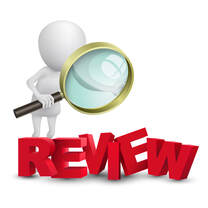 But it is either the reviews or the free sample (sometimes both) that actually sells the book. Reviews because people will buy what other people have liked and the free sample because it allows the reader to decide if the book lives up to the expectations raised by the blurb and the cover. But that assumes that the book appears high enough up in the search results. There can be no doubt that Amazon ranks search results by popularity. At the top of Page 1 of the results is always the “sponsored” books, the ones that authors or publishers have paid to be there. Then you usually get the best-sellers in the genre because Amazon knows that they are money makers. The rest of the results can be spread over many pages and there is no way of knowing how far readers will go through the results before they buy their next read. Yes, your book will be there if you used the right keywords, but they may be on page 100. 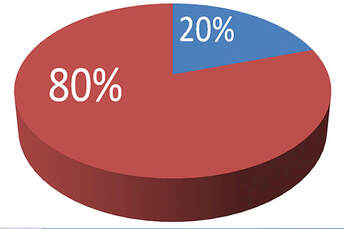 I suspect it’s going to be one of those 80:20 things. 80% of all books that will be purchased will appear on the first 2 or 3 pages of results and only the remaining 20% of sales will be made on subsequent pages of results, with the percentage declining the further you go through the pages. I have no evidence to support that, BTW, but intuitively it would seem to make sense. So, if you want to be in that 80% you have to do something else to make that happen. And that falls outside the second approach described above. To get your book into the 80% you have to find some way of marketing the book that doesn’t depend just on search results. You have to find a way of getting the reader to go looking for that book specifically, rather than doing a search. And that means finding a way of getting the reader to click on a link so that they go to exactly the right page for the book.  So, we’re back to social media. Yes and no. Social media is just one route that can be taken. We’ve already mentioned paid advertising as a way for readers to find a book the reader didn’t even know they wanted to buy. We use it and it pays for itself many times over. But for people who have a more limited budget that isn’t always a viable route to take (but check it out because it’s probably cheaper than you think). When you use social media and search results together, you start to harness the best of both worlds. It isn’t an either/or situation. It is a “both in the right place” situation. Then you can add in things such as email lists, promos, blogs and so much more.  I could list all the approaches that we at Selfishgenie Publishing use, but you would end up reading all day and you probably aren’t up for that. Scroll down to read the blog we posted a fortnight ago, because that says a bit more about what successful book marketing involves. Suffice to say – there is more than one way to skin a cat and using several ways, at the right time and in the right way, is always going to produce better results than just limiting yourself to one approach (apologies to animal lovers, but it’s just a saying. No animals were harmed in the writing of this blog). That is why marketing is such a time consuming activity for the Indie author and if you aren’t prepared to commit the time, you are always going to get disappointing levels of sales. One of the most frequent questions Indie authors ask about marketing their books is “Which is the best place to market my book?” The answer to that is so subjective that there simply is no answer. 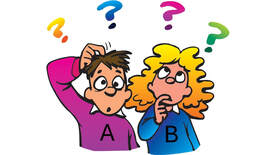 Just because Author A had huge success using Platform X, it doesn’t mean that Author B will have the same success if they also use it. This is why you have to know your readers, especially when it comes to using social media. For example, TikTok is used a lot by younger people. Now, don’t get the idea that it is only used by them, because older people use to too. But if you want to reach younger readers, then you are better off using TikTok than using, say, Facebook. Many women find X (formerly Twitter) too hostile for them, so if you want to reach a female audience you would be better off using Instagram or perhaps Pinterest, where more women tend to hang out. And that is why Author A may be having more success and why Author B won’t because their readership is different and therefore their readers’ social media habits are different.  There are even some readers who don’t use social media at all, or the internet for that matter (I know, weird, huh?) so reaching that group of people is going to be really hard, which is where book fairs and other real world forums fit into the equation. I’m not saying you have to be everywhere, all the time. You would have to be superhuman to do that. But you do have to think in terms of being in more than one place at any time. This is why real research is so important. You have to know where the majority of your target readership hangs out and when they hang out there, so that you can be in the same place at the same time. For example, there is little point in targeting YA audiences between 9 in the morning and 4 in the afternoon, because they will be in school or college. You have to target them in the evening. So, what would we like you to take away from this blog? 1. Book marketing is not a binary choice. It is multifaceted. 2. Taking multiple approaches to marketing covers more bases, which means it is likely that you will sell more books. 3. Know where (and when) to find your readers, so your readers can find you. If you have enjoyed this blog, or found it informative, then make sure you don’t miss future editions. Just click on the button below to sign up for our newsletter. We’ll even send you a free ebook for doing so. Disclaimer: We are not connected with Kindlepreneur in any way and have no financial interest in the product reviewed in this blog. This review has not been paid for by Kindlepreneur, Dave Chesson, or anyone else.  Not the real product's logo! Not the real product's logo! Let me make it clear up front, if you only have one book published and never intend publishing another, you aren’t doing much marketing and you don’t intend paying for marketing, this product may not be of much use to you. But if you intend having a lengthy career as a self-published author, if you are planning to publish a series, or if you are a small, independent publishing house like us, then there is probably something here to interest you. Warning: This is a lengthy blog because for authors and publishers to understand the value of the product we are reviewing, they also have to understand the need for it. What need do you have that this product satisfies? You may not even know you have that need until you read this blog. Publisher Rocket is an aid to marketing and an aid to advertising using Amazon Ads and other advertising platforms. One of the things every publisher (I include self-published authors in that) has to know is which keywords to include in their book’s description in order for it to attract the attention of readers when they are looking for something new to read.  If you have ever uploaded a book onto KDP, you will know that you are allowed to enter 7 “keywords” into your book’s details. Actually, you can use more than 7 words, because you can enter “strings” of words. For example, you don’t have to limit yourself to “romance” as a keyword, you can enter “modern romance” instead and it will still only count as one keyword. When readers are searching for books to read they may use Google, other search engines, or the search bars of retail sites such as Amazon. Very often they don’t know exactly what they are looking for, so they can’t enter a title or an author’s name. Instead, they enter a word or string of words that describes (for them) the type of book they want. For example, as a fan of historical fiction, I may do a search using those two words. Or I might add “military” to the description because I like historical fiction set around military themes. Or I might use “World War II” as my search term. "they are wasting one of the 7 keywords that KDP allows them." If the author knows what search words the readers are using, they can make sure those words are included in their 7 keywords for their book’s description on KDP, so they are guaranteed to be found when a search is done, and the book will appear in the search results - though not necessarily near the top of the list. But authors also need to know which words not to include; the words that readers rarely use for searches. If the author uses them, then they are wasting one of the 7 keywords that KDP allows them. 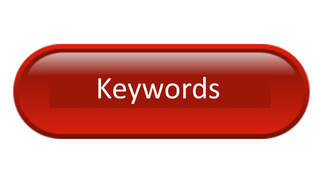 The problem is, identifying which words the readers are using. It may not be the ones we think they are. You may think I’m talking about “Search Engine Optimisation” (SEO) and you are dead right – I am. Only we don’t need to use a fancy term like that, and we certainly don’t need to pay someone to do that for us. Manual targeting on Amazon Ads is the most cost efficient way of using that advertising platform. But it relies heavily on the advertiser (you) knowing how to get the best out it. 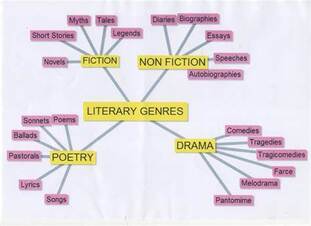 So many genres - but which one is the best fit for your book? So many genres - but which one is the best fit for your book? The first type of manual targeting uses your book’s genre. Anyone who buys books in the same genre will have your book in their “recommendations”. Amazon Ads suggests the genres and you can delete any that you don’t think really apply. For example, Amazon Ads may suggest both modern and historical romance for your book, but your book can’t be both, so you can delete the one that doesn’t apply. But you can also insert your own genres. For example, if yours is a fantasy book with a strong romantic sub-plot, you don’t have to limit your advertising to the fantasy genre. You can add romance genres too. Do you know which genre listing on Amazon is going to be the best for your book? Some are better than others for getting your book seen and, according to Publishing Rocket’s publicity video, there are “hidden” genres too. For some genres you can even get to the number 1 bestseller spot by selling only a handful of copies. That is useful stuff to know – but how do you find out which genre(s) you should be advertising to? Read on to find out. By the way, did you know that you aren’t limited to just 2 genres on KDP? That only applies when you first upload your book. Once it is published, you can select up to 7. You need an account on Author Central and then you need to go to Help>Contact>Amazon Store & Detail Page>Contact us>Amazon Book Page>Update Amazon Categories.  The second type of manual targeting uses keywords. Amazon Ads tutorials suggest using between 100 and 150 keywords (or keywords strings) in an ad such as this. If you struggled to come up with 7 keywords for your book, how are you going to come up with 100-150? Well, using author names and the titles of similar books is one way. But whose books and which titles? Which is where Publisher Rocket comes in. OK, it took a long time to get here, but if you don’t understand the basics of Amazon (or other platform) advertising, you aren’t going to understand the value of this product. What Publisher Rocket does is gather together the search terms that are used on Amazon and presents them to you for your consideration. But it also does much more than that. It also provides data which tells you which of those terms is best at turning advert “clicks” into sales. "Publisher Rocket helps to sort the wheat from the chaff"  Not all search words are equal, you see. Sometimes the reader enters fairly random words into the search bar and therefore the results they get back don’t provide them with what they are looking for, so they have to have another go. But if the reader clicks on a book out of curiosity, those random search words still appear as results, so it is essential to know that they aren’t that useful, so as to exclude them. Publisher Rocket helps to sort the wheat from the chaff by providing the user with a wide range of data that they can download into a spreadsheet to filter and sort to their heart’s content to answer the vital keyword questions they may have. The one thing they don’t want to do is pay for clicks on their ad which won’t be converted into sales. Just because they and Isaac Asimov both write sci-fi, it doesn’t mean that their readers and Isaac Asimov’s readers like the same sort of books. They may want to exclude that name as a keyword for that reason, so that they don’t pay for clicks from curious Isaac Asimov readers who aren’t going to buy their books.  OK, if that sounds complicated, that may be something for just the real data nerds to get into. For the rest of us, Publisher Rocket provides us with some simpler tools to use to find words that are good to use for our books, by genre, and what aren’t so good. Using the app is easy enough, but Publisher Rocket’s owners make it even easier by providing “how to” webinars to guide you through the various functions and offer advice on how to get the best results. The owner of Publisher Rocket is a company called Kindlepreneur, a company created by self-made Kindle millionaire Dave Chesson. This isn’t their only product, but it is the one we have found to be most useful in helping us to increase the efficiency of our advertising campaigns. If you saw our blog last week (see below the end of this blog), you will know that this is something we have been focusing on in recent months and it has paid off for us. Publisher Rocket costs $97 (around £85) for a lifetime subscription, which is why it may not be suitable for people who only ever plan to publish one book and who don’t intend getting into marketing. In other words, it isn’t any use to an author who doesn’t want their book to be read. Those that do want their books to be read may find it more useful. "As a publisher this was a no brainer for us" But even if you only have one book, the purchase price could be paid back quite quickly (it is the equivalent to approximately 50 extra sales) if you use the results to improve your advertising efficiency. As a publisher this was a no brainer for us. We bought Publisher Rocket in November last year and it had paid for itself by Christmas. We don’t use it every day, but when we do use it we know we are going to get the most bangs for our buck out of our advertising. So, if you need some help with your Amazon Ads, this product may be just the thing and we are happy to recommend it. If you want to know more about the product, click here. If you have enjoyed this blog, or found it informative, then make sure you don’t miss future editions. Just click on the button below to sign up for our newsletter. We’ll even send you a free ebook for doing so.  In an earlier blog, a book review as it happens, I mentioned that I created a mental image of the sort of people that I think buy my books. It helps me if I have them in mind when I’m writing, because I can tailor my writing style to them. There is nothing new in taking this sort of approach. In marketing terms, it is P for people, which means understanding the sort of people who are going to buy a product. If you are creating fashions that appeal to women in their late teens to early twenties, for example, it is important to know what sort of styles, colours and fabrics those consumers are attracted to. It will be totally different to those that appeal to women in their 50s and 60s. Get it right and you sell lots of product, get it wrong and you are left with thousands of items unsold – and a reputation for being a brand that is out of touch.  Know your audience! Know your audience! I could give loads of examples of how manufacturers adopt this approach, but I would quickly bore you and I have no desire to do that. But market research plays a huge part in developing a product, just to find out what the buying public finds attractive and what they don’t. Pretty much every product has its “ideal” consumer. And, at the most basic level, a book is just another product, so knowing your audience, or consumer, is important to authors for the same reason. If you use a lot of modern slang in your writing, you are not going to write a book that appeals to readers for whom such slang is as alien as a foreign language. But there is more to it than that.  Sci-fi audience Sci-fi audience Certain types of fiction attract different types of reader. Research was carried out into readers of sci-fi and fantasy, collectively known as SFF. It was discovered that there is a strong correlation between people who take an interest in science and those who read SFF. The findings report that SFF readers start at a young age, typically under 20. They read more than the average number of books per month. Boys have a higher preference for sci-fi and girls have a preference for fantasy, though both are likely to read either. And perhaps most importantly, the study found that SFF readers have a higher level of educational achievement compared to other reading genres. The most important take-away from that is educated readers usually have more sophisticated tastes. They won’t put up with poor quality writing. So, if you are an author who writes in either of those genres, expect your readers to be well educated. They will have a good understanding of science and, for fantasy, they will probably have a good working knowledge of mythology, demonology etc "There are obvious age divides in some markets." If you forget that, you might find your books don’t attract readers and you may also find that those that do sell don’t get good reviews. Are you an SFF author? Did you know that? There are differences in other genres as well. Unsurprisingly, women are bigger readers of romance, but they are also bigger readers of thrillers, which came as a bit of a surprise to this author. Also, thriller and crime readers tend towards the older generations, with 35% being over 65, but less than 5% being under 30. So, in terms of the language used in thrillers and crime novels, it is best to stay away from modern idioms and slang if you want to reach the largest audience. There are obvious age divides in some markets. “Young adult” is such a market. Those readers will be well versed in modern slang. So much so that in three year’s time, a whole new audience will have emerged who can’t relate to the language that was used just a few years earlier.  Age gap Age gap This means that YA fiction dates very quickly, unless the author is very careful in their choice of language. It has to be “young” enough to appeal to that age group, but also won’t go out of date too quickly and result in poor sales in a few years’ time. YA readers outgrow the genre quite quickly, looking for new authors that appeal to their developing maturity, so there is no longevity, the way there is in other genres. Capture the attention of a thriller reader at 30 and you pretty much have their attention for the rest of their life. Capture a YA reader at 13 and you’ve probably lost them by 18. So, the YA author has to keep looking for the next audience, not just for their new books, but also for their existing books. Personally, I would avoid writing YA for that very reason, because the marketing effort is never ending. It also means that output has to be higher to satisfy the existing audience before they outgrow the genre. 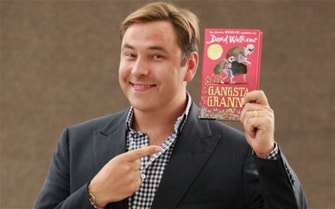 Children's author David Walliams Children's author David Walliams This same problem also applies to writers of children’s books. If Mum or Dad were fans 15 to 20 years earlier, then they may buy the books for their children, but otherwise the author has to rely on a lot of peer influence to make their books popular. My grandson reads the books his school friends read, not the ones his parents want him to read. For example, The Chronicles of Narnia collection, by C S Lewis, rank only 5,600 on Amazon, but the latest David Walliams book is ranked at 13. In 20 years time you can say “David Walliams” and the children won’t reply “Yeah, I read his books”, as they do now, they’ll reply “Who?”. The author of the books they will be reading is probably still at school him or her self right now. So, who is your generic reader? Are they male, female or both? What age are they? What sort of educational levels have they achieved, or will they achieve? What are their hobbies and interests? What language will they relate to and what will make them throw your book at the wall? It isn’t always easy to answer those sorts of questions, but you can start close to home. Do you write the sorts of books that you also like to read? If so, then you probably conform to the norm for your genre except for, perhaps, gender. Just because you are male (or female) it doesn’t mean that only men (or women) will like your books, because some genres have cross gender appeal. Others, however, don’t. 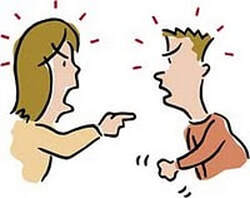 Some men won’t buy books with a female protagonist and some women won’t buy books with a male protagonist, because they can’t identify with them. Others have no problem with either. And if there are gender issues that limit your audience size, then you can bet your life that there are also further limiting factors, such as sexual preferences. Will a book with strong LGBTQ+ content have a wide appeal amongst heterosexual audiences? It's more like to be read by a niche audience and niche markets are unlikely to result in fame and fortune (if those are your goals). Ultimately this is important not just in terms of who will buy your books, but also how you market your work. There is no point in directing your limited advertising budget towards the wrong audience, or one that is heavily biased in terms of gender, age, educational achievement or any other characteristic. It also matters when it comes to where you promote your work. If you are a writer of children's books or YA, don't bother with Twitter or Facebook, because your readers are all on Tik-Tok. As for the older generations, the older they are, the less likely they are to be on social media in the first place. Reader loyalty doesn’t come about by accident. It comes about because you understand your readers and your readers understand your books. If you have enjoyed this blog and want to be sure of not missing the next one, just sign-up for our newsletter by clicking on the button below and you will also qualify for a FREE eBook..  Many an “Indie” author will tell you that the hard part of being an author isn’t the writing of the book, no matter how hard that seemed at the time. No, the hard part is actually selling the book to readers. Let’s face it, it doesn’t matter how good the book is, if no one knows it exists then they can’t buy it. Readers rarely, if ever, just stumble across a new author’s work. It may occasionally appear on Amazon under the heading of ‘People who bought …. Also bought …..” but that is the equivalent of hoping to hit a fish by throwing a stone into the sea. OK, theoretically you could, but it’s unlikely you will.  Do not confuse marketing with advertising, because advertising is just a small part of the marketing mix which we will discuss later in this blog. It is covered under the P for promotion part of the mix, but even then it is quite a minor part. Back at the beginning of this year we published a series of blogs that discussed marketing in depth. If you want to read the whole series then look under February in the archive and scroll down to the bottom of the page to start at the beginning. Don’t be confused by the fact that the first blog is Week 5 – the first 4 weeks were looking at the dark arts of publishing. The series continues into March and April But before you go and look at the archive, we’re going to reprise some of the highlights of those blogs to give you a few things to think about. Call them the ‘key messages’. 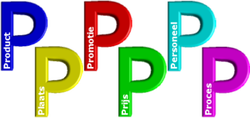 We’ll start with the marketing mix – the 6 Ps. Some marketing blogs talk about the 4Ps, but we’re a bit like Spinal Tap, our Ps go all the way up to 6 (Younger readers may not get that reference). These are:
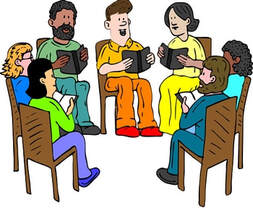 The most important P is people The most important P is people You might think that ’promotion’ is the most important part of the marketing mix, but it isn’t. It’s people. You can 'promote' your ‘product’ as much as you like, but if you aren’t reaching the right people, then you are wasting your time and, probably, your money. Your ‘people’ are the people who read books similar to the ones you write. They are the ones you need to identify and engage with on social media. I say ‘engage’, because if you just ‘promote’ you will lose their interest very quickly. Yes, you can promote, but only as a small part of engagement. You need people to want to follow you, which means having something interesting to say. And if you doubt that, consider this – you’re reading this blog, aren’t you? That is part of our ‘engagement’ with you. Maybe, as a consequence of our engagement, you might take a look at the ‘Books’ page of our website to see what we have to offer – or maybe you won’t. The choice is yours, but the important thing is that you are here, which makes the choice easier. 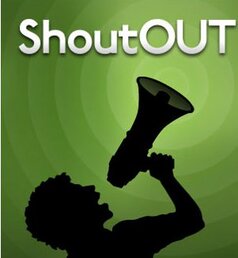 Paying companies to blast out Tweets about your book won’t get you sales -despite their promises of having a gazillion followers. Because only the Tweets (or other social media posts) that reach the sort of people that read your sort of books are of any use and only you can identify and engage with those people. Just as an aside – doing a #writerslift on Twitter isn’t engagement, it is just becoming increasingly annoying because so many people are doing those. And everyone in the list replying to it and filling up notification boxes is even more annoying. We’ve started blocking all the people who do it. We’ll assume from the start that your book is well written, has a good plot, interesting characters, has been properly edited, proofread and corrected. It is therefore fit for purpose. Only you and your Beta Readers can judge that. So that part of the next P, ‘product’, is OK.  After that the most important part of the product is the cover. Despite the warning in the old proverb, people do judge books by their covers. So, yours must be right for your genre. The cover image is what is going to attract people’s attention, so it has to be eye catching and genre appropriate. A picture of a woman in a big bonnet walking through a field of daisies isn’t going to sell many sci-fi books. The second thing about the cover is that it should tell the reader a little bit about what is happening in between the covers. Call it a visual representation of the plot. A picture is worth a thousand words, or so they say, so make sure that the picture on your cover is using those thousand words to best effect. Here’s one of ours which, we think, tells you a lot about the plot. 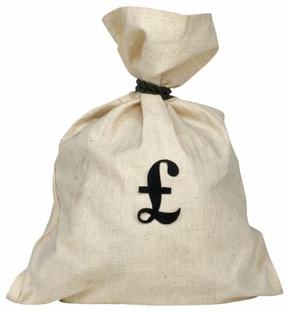 What about price? How much should you charge for your book? If you are a big-name author, you (or, more likely, your publisher) can get away with charging £12.99 ($14.99) for your book. If you are an unknown or Indie author, don’t even think about it. There is some interesting psychology related to pricing. On the one hand, people expect to pay more for a quality product. On the other hand, everyone loves a bargain, even readers. Where you pitch the price of your book is therefore important. Price it an 99p (99c) and readers may think ‘It can’t be very good if they’re practically giving it away’. On the other hand, price it at £12.99 and readers may say ‘I’m not going to pay that much to read a book by an author I’ve never heard of’. We price our ebooks at £4.99 ($5.99) and that seems to be about right for us. But the key messages are (a) don’t undersell yourself and (b) don’t price yourself out of the market. 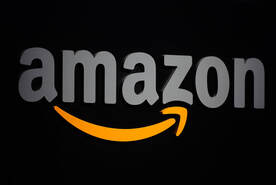 When we talk about ‘place’ we mean the places where you promote your books rather than the places you sell them. We’re going to assume that your book is listed on all the relevant ebook etailing sites and, for those of you that don’t want to give money to Geoff Bezos, all we can say is that if you aren’t on Amazon, you aren’t anywhere. Internet searches always place Amazon at the top of the results, so if someone is actually trying to find your book, that is where it will appear first – and perhaps the only place on the first page of results. Amazon's Kindle Direct Publishing offshoot also allows you to publish in paperback without paying expensive set-up charges or buying a minimum number of copies. But in our terms, place means your choice of social media site(s) on which to engage with readers and promote your work and your choice is important.  If you want to reach young people, then Facebook isn’t the place and Twitter is iffy at best, because young people are always on the newest, trendiest platforms. Only 51% of social media users between ages 12 and 18 use Facebook – the second smallest group. So you need to do some basic research to make sure the platform(s) you are using are the right ones to reach your target audience. But don’t rely on social media alone. Local newspapers and radio stations are always looking for content, so a short item (written by you) will fill some column inches for them or an interview will fill five minutes of radio time. But, again, don’t expect them to find you. You have to reach out to them. Also, check your local community resources (libraries, schools, colleges churches, clubs, societies, etc) for events where you can go along and talk about your work (and maybe sell a few copies).  Promotion can be anything from a Tweet or Facebook post to a video, podcast, a free extract or paid for advertising. I don’t aim to cover all of those. Instead I’ll focus on the one that you have to pay for – advertising. Social media has given us all the ability to run relatively cheap advertising campaigns – but which ones work and which don’t? Ask us a question that we can answer. Because, again, it depends on the advertising channel you use. There is no point in paying for and advert on Facebook if hardly any of your target audience ever uses Facebook. We can tell you where we get the best return on our advertising budget – but that would be more confusing because we use different platforms for different books, because different audiences use different social media platforms. What we can tell you is that spending money on Amazon doesn’t seem to work for us. We don’t know why that is, but we have had very little success there. Other publishers and authors tell us that they have had significant success using Amazon, so we can’t explain it. But one important detail about advertising. Makes sure your advert includes the following:
 You’re now wondering what I’m going to say about ‘process’. Actually, not a lot. I’ve tried to get the messages in this blog in the order you need to address them. That’s about all the ‘process’ you need to worry about. But if you want to be successful your ‘process’ must also include research:
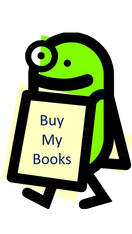 Without that research, you may as well be standing on a street corner shouting ‘buy my book’. And you will be no more successful. And, if doing research sounds like too much hassle, then good luck getting people to stumble across your book by chance. If you have found this blog informative or entertaining (or both) then make sure not to miss future editions by signing up for our newsletter. Just click on the button below.  Here at Selfishgenie Publishing we use social media as a marketing tool. If you read our series of blogs on the subject (still available in the archive) you will see that it is cheap and quite effective if used well. However, there is a darker side to social media marketing and people are falling for it every day. Actually, there are two dark sides. The first is dark, the second is very dark. The plain dark is the way social media is used to capture your personal data, which is then sold to third parties so they can bombard you with advertising. We’re not talking about the usual clicking of the “agree” button for terms and conditions. That is just the way that social media sites make money by letting you use their platforms for free. If you don’t agree, you can’t use the platform. Seemples. 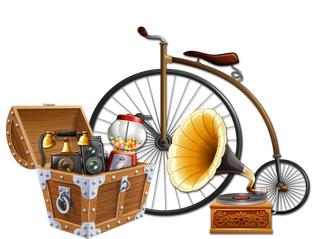 No, we mean the way memes are used to capture data. You may think it’s just a fun question for you to answer, but it isn’t. It is aimed at grabbing a little snippet of personal data from you that will be of use to someone in targeting their adverts. Not only that, but you even give them the address to which they can send the advert. I’ll give you an example. One meme that appears quite regularly is “Name something from your childhood that young people today wouldn’t understand.” Sounds harmless, doesn’t it? Just a bit of fun. But your answer puts you firmly into a specific age bracket. That tiny scrap of data can then be used to target you for adverts aimed at your age group. If you happen to be our age, it might be stairlifts, funeral plans or walk-in bathtubs.  And how do they get your address? It’s your social media username, which shows up every time you reply to one of these posts. That gives them access to your profile as well, which probably provides them with even more personal data. It also tells the person that posted the meme something else about you. It tells them you were gullible enough to respond to the meme. And if you were gullible enough to do that, you may be gullible enough to fall for an advert for a substandard, or even non-existent, product.  Other age-related questions are based around subjects such as music (a song or band name can give away the decade when you were a teenager), films, books, TV shows, the car in which you learnt to drive etc. So, what is the “very dark” side of these memes. It relates to cybercrime. It’s the questions that are aimed at trying to get hold of your passwords so that your accounts can be hacked. You may think I mean your bank accounts, Paypal etc, but I don’t. I mean your social media accounts, because many of these are used as the basis for scams of one sort or another. "You may think that none of your friends would be stupid enough to fall for a scam"  If I can make myself appear to be you, by posting on one of your social media accounts, then your friends may trust what has been posted. It also allows me to access the list of all your social media friends, which I can sell. You may think that none of your friends would be stupid enough to fall for a scam, but hundreds of thousands of people across the world, good, honest and above all intelligent people, have fallen for these scams. It only needs one of your hundreds of social media friends to fall victim for the scammer to win. So those sorts of posts will ask you about your first car, your first pet, your first school and a whole lot of similar things because those are the sorts of things that are used as passwords or as the answers to security questions. These also include you “pornstar” or “stripper” names, or even your secret agent name. eg “The last thing you ate and the name of your first pet is your secret agent name.” You wouldn’t tell someone your account number and password for your bank account, but you are happy to tell them the name of your first pet – which is almost as revealing. There are other ways of getting the account number and password, you’re just making things a bit easier for them when they try to hack your account, by providing the answers to the security questions or memorable information  So, other than the age-related memes, what others should you be on the lookout for? The most obvious ones are worded like this. “You are about to be attacked by a zombie. The last thing you bought is the weapon you must use to fight it. What will you use?” That’s quite an easy one to identify, because it relates directly to products. If you bought the thing you are going to use against this hypothetical zombie, then you’re likely to buy more of the same. How about this one. “It’s your best friend’s birthday today. The nearest thing to your right hand is what you will be giving them as a birthday present. What will they get?” Again, this is product related, because whatever you answer can then be used to target you for similar products. If you say “a plate of biscuits”, then you’ll be targeted for biscuit advertising (or, more likely, sweet things in general). You may also become a target for advertising for plus sized clothing or dieting aids. 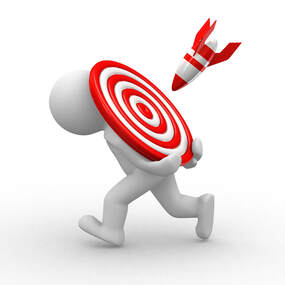 An answer related to smoking products may result in you being targeted for nicotine replacement therapies, books on how to stop smoking or drugs to help you stop smoking (which may or may not work and may even be harmful to your health). OK, how about something a little bit different. “The last place you visited is where you will spend your honeymoon. Where will you go?” Whatever your answer, you will be targeted for advertising for similar destinations, cheap airline seats, hotels, etc. Now, if you don’t mind being targeted for advertising, then there’s nothing wrong with any of this. But if you’d rather spend your social media time actually socialising, rather than scrolling through adverts, you might do well to avoid responding to those memes.  You may think that your “advertising preferences”, which you have carefully selected on your favourite social media sites, will protect you against these adverts. You would be wrong. These simply tell the site’s owners (Facebook, Twitter, Insta et al) who they can direct adverts for certain products towards in order to maximise the number of clicks for the advertisers. They won’t prevent you from seeing advertising from other sources that are paying those same sites to “boost” a post or whatever term the site uses. Believe it or not, there is no way that you can actually prevent advertising from appearing on your social media pages. All you can do is tell the sites which products you’re not too unhappy seeing. You’ll see all the others anyway because they’re paying the social media site to blast the adverts out to anyone who has an account. But giving away your little bits of data allows those “blast it out” type of advertisers to refine their audience by targeting you personally, by age, gender, interests, purchasing habits, cultural tastes etc 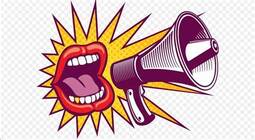 And, when you ask yourself “How did they know that about me?”, the answer will be “Because you told them.” Many of the products will be genuine but remember what we said about targeting the gullible. That’s how scams work, because they’ll try to get your money by selling products they have no intention of ever delivering. How do you know they actually own that holiday cottage or Spanish villa they are offering to rent you? They will also try to sell you products which may not conform to safety standards. You have no idea where the sellers of the products may be based, so you have no way of finding out if they are reputable. There are ways of countering this form of data snatching and that is to tell lies. If the data that is captured is inaccurate it becomes useless, because the advertiser is directing their adverts towards people who won’t buy their product or service (whether it’s real or a fake). That means they are wasting their money and will have to find some other way of identifying their target audience. They will find that way, of course, but there’s no need for you to collaborate with them in their search. “Does this tell somebody something about me that they didn’t, or couldn’t, otherwise know?” 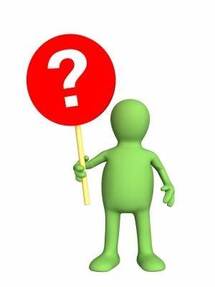 There is one thing we can all do when we read these memes. It is to ask ourselves one simple question: “Does this tell somebody something about me that they didn’t, or couldn’t, otherwise know?” If the answer is yes, you are making an informed choice about whether or not to post your answer. You don’t have to. It isn’t compulsory. And if you choose not to answer, you will reduce the amount of advertising (real or scam) that appears on your social media feeds. For the darker forms of data capture, the ones that are aimed at finding out the answers to security questions, then the questions is much simpler. “If I answer this question, could it compromise the security of any of my accounts?” Again, telling lies in answer to the questions makes the information useless and it will frustrate the scammers, which is actually a result for us good guys. One thing of which we can be sure is that the people who post these memes aren’t acting in your best interests. If they were, they wouldn’t be hiding behind fake user IDs and asking seemingly innocent questions in order to grab your personal data. It’s up to you whether you co-operate with them, but we recommend you don’t. If you have enjoyed reading this blog, or found it informative, why not make sure you don't miss future editions by signing up for our newsletter. We promise not to spam you, or to sell your data to scammers. Just click on the button below. Week 12- Location, Location, Location  There is one P of the marketing mix we haven’t really touched on yet and that is Place. This comes in two different forms for the Indie author – where to sell your books and where to promote them. We’ll start with where to sell. There are a lot of Indie authors (and other people) who get very snooty about Amazon. Because it is so big and because its owner is so rich, they take a “stand against the man” and won’t trade with them. OK. You’re entitled to your view and I respect it. But let me tell you something. In 2019 Amazon accounted for 47% of all self-published books sold in the world, in all formats. That leaves all the others (Kobo, BookNook, Smashwords, Lulu, et al) dividing up the other 53% between them. No matter what your favourite platform, it is never going to match Amazon in terms of market share. "it is never going to match Amazon in terms of market share" 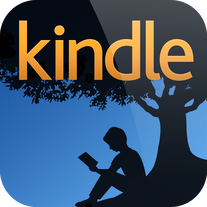 Amazon are shy about revealing details of how many Kindles have been sold, but the estimates are between 20 million and 90 million. Some of those will probably be shared between users. There is no data that I can find on how many times the Kindle app has been downloaded, but it is available to everyone who has a digital device if they fancy reading a Kindle book. That is an estimated 5.2 billion phone handsets and an estimated 1.14 billion tablets. Trust me, Amazon aren’t paying me to tell you these things. I’m just providing the data and you can make your own decisions. Can you really afford not to be on Amazon? Can you really afford not to link your book to Amazon if you are already on there? OK, that’s just going to make Amazon bigger, but it is in the hands of the other retailers to try and compete with Amazon, but right now they aren’t even in the game, let alone inside the stadium and fighting for a win. 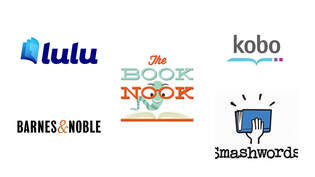 I’m not saying that you shouldn’t be on the other platforms. It makes sense to be everywhere you can, but the most likely place for your book to sell is the Big A. One of the advantages of some of the other platforms is that some of them allow the author to offer coupons and other ways to provide discounts and free books to readers. You can do this on Amazon but it is far harder. For example, we passed a milestone for a number of followers on Twitter, so we Tweeted a Smashwords coupon code for a 100% discount on one of our books that was only valid for 24 hours. We got several downloads (and lots of new Twitter followers) and then a couple of sales from people who missed the cut-off time for the coupon but decided they wanted to read the book anyway. We couldn’t have done that with Amazon. 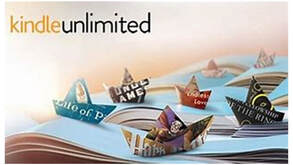 Amazon’s Kindle Unlimited (KU) programme is the biggest subscription service/lending library for Indie books. This puts the Indie author into a bit of a quandary. Because it is part of KDP’s T&Cs that you can’t enrol your eBook on KU if it is published on another platform. Sneaky, I know. So, you now have to try to work out whether you are going to be financially better off by not enrolling in KU and selling through multiple platforms, or whether your sales on other platforms aren’t worth you being there, so it is better to be on KU instead. That’s not always an easy choice to make.
books. That is part of your market research. For example, women are more likely buy Kindles than men – but men are more likely to become permanent Kindle users than women, if they have one. Maybe it is just that women buy the Kindles as gifts for men in the first place, but I have no evidence to back up that supposition. The good news is there’s room for some trial and error. You can enrol your book in KU at any time, so if you aren’t making sales on the other platforms you can de-list the book and enrol it on KU instead. It’s harder to unenroll from KU as you have to wait until the end of a 3 month period and if you miss the date it will auto-enrol you for another 3 months.  Now, which social media platforms are you going to use to reach your target audience? We touched on this in earlier blogs but it is time to take a more in-depth look. The demographics of social media usage varies from platform to platform. Those that are better for visual images, especially video, tend to be more popular with young people. The ones that allow you to “tell a story” in words, like Facebook, are more used by people in the 30 to 50 age group. This is going to affect your choice of platform and your choice of messages. You can be on all of them, of course, but you are going to waste some of your effort by concentrating on the wrong ones. Platform usage also varies from country to country, so here’s some stats:
 From that you might assume that the UK is all on Twitter. You would be wrong. When you look at the actual number of users it goes FB (38 million), Insta (28 million) then Twitter (17 million) so the place to be seen would appear to be FB. The same applies to the USA (310m, 95m and 68m). What makes it more difficult is that these numbers change every year. Those are the ones for 2020. Who knows where people will be by the end of 2021. But what this means is that if you are targeting a global population for your books, you can analyse data like that and decide which platform is going to be best for you to concentrate on in that country. In both the USA and UK, it is most definitely FB, not Twitter. This becomes even more significant when it comes to spending money on advertising (a topic for a later blog), then clearly you are better off spending your hard-earned cash on FB advertising, not Twitter, because FB can reach more people. "In both the USA and UK, it is most definitely FB, not Twitter. "  Facebook's founder, Mark Zuckerberg Facebook's founder, Mark Zuckerberg Of course, that takes us back into the world of personal politics because a lot of people don’t like Mark Zuckerberg and don’t want to make him any richer than he is. On the other hand, those same people want to sell books. Whatcha gonna do? You can slice and dice the data in a number of other ways. For example, is your target audience college educated? If yes, then more college educated people use Facebook than Twitter. Is your ideal reader a high-income earner? Then Facebook is also the place for you. On all 3 platforms the largest proportion of users is amongst the higher income bracket, but on FB it is a massive 74% of high-income earners. That is to say, of all those users of social media who are high income earners, 74% will use FB but only 31% will use Twitter. "You can slice and dice the data in a number of other ways" Where did all that data come from? It came from this website, to which we provided a link in a previous blog. The data relates mainly to users in the USA, but there is no reason to suggest that the data doesn’t transpose to the UK, especially when you look at that number of users for the different countries that are shown above.  Market research companies allow some of their data to be accessed, which can be helpful. For example, on the Yougov website (registration is free) I discovered that fans of Bernard Cornwell are more likely to be male, over 55, interested in history and politics and follow the news and, when it comes to reading, they want to find a series that “they can dive into for a while”. Now that I know that age bracket, I can find out which social media platform they are most likely to use and target them on that and I know what sort of messages they are going to be interested in reading and engaging with. OK, the amount of data I got from Yougov wasn’t that much, but they make their money by selling data, not giving it away for free. Having registered with them I’ll probably be bombarded with emails inviting me to take out a subscription. I may not need to, because the insights I got from them without paying were high value in terms of audience profiling.  Best-selling author Bernard Cornwell Best-selling author Bernard Cornwell Why Bernard Cornwell? Well, I’m a fan. But I could have got similar data for the readers of authors of any genre of book that we publish. Because their fans are probably the people we want to target for advertising. As you can see this is, again, very time-consuming stuff. If you are juggling family, work and being an author, you haven’t got much time leftover for marketing. Well, I don’t want to pressure you, but you can always find someone who can do some of it for you. Yes we will take a share of your royalties, but a share is better than no royalties at all. In the next edition of this blog we’re going to look at the one place where you may be tempted to spend some money – advertising. Is it something an Indie author should be considering? If you have enjoyed this blog and found it informative, make sure you don't miss future editions by signing up to receive our newsletter. Just click the button. Week 6 - The Big Shout Out  I’m starting this week’s blog with some basic maths for you. Let’s say you write at a rate of 1,000 words every two hours and you produce a book that is around 90,000 words long. That means that it took you about 180 hours to write. Those 180 hours may be spread over a few weeks, a few months or even a few years, but it doesn’t matter. If you were to pay yourself the UK national minimum wage (at time of writing) for your work, you would get £8.72 per hour if you are over 25. So, multiply the number of working hours by the hourly rate and it means that you need to receive £1,596 in “royalties”, just to pay you for the time taken to write your book, which doesn’t include time spent editing, re-writing, proofreading, formatting, up-loading and marketing. But we’ll keep it simple and call it £1,600. If you sell your book as an ebook on Amazon for £4.99, which is a typical price for an Indie author, you will receive about £3 in royalties, which means you need to sell 533 books just to cover your wages for writing the book.
royalties, because the publisher takes the other 50% to cover the work they do (they don’t work for minimum wage). That means you need to sell 1,066 books to earn £1,600. That doesn’t sound too bad, does it? There are many self-published authors who sell a lot more books than that. Actually, that is quite a lot of books for an unknown author to sell. So, the unknown author has to find a way to become a “known” author and that is where marketing comes in. There are 4,000 new books published every day, that’s over 115,000 a month. Most of those books will be by unknown authors and most of those authors will remain unknown – unless they learn how to market their product. 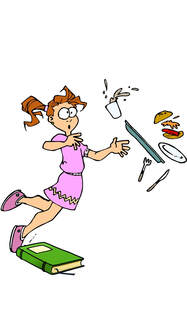 Trust me, 1,066 people aren’t going to stumble across your book by accident. But if I’ve got a publisher, why do I need to do the marketing? A good question. All authors, even those signed to big publishing houses, have to do some marketing – remember it’s the authors that do the book tours and radio interviews, not the publishers, and those are marketing activities just as much as the sort of things I’m going to talk about. But the short answer is that your publisher has several authors on which to concentrate, but you can concentrate on you. Double the marketing activity means double the likelihood of selling some books. You have to work as a team on this to get the best results. But this blog is actually aimed at all Indie authors, so this is aimed at the self-publishing community just as much as the published community.
number of things. If you are good at it, it may cost you almost nothing. If you aren’t any good at it, it could cost you sales. This is where “social media marketing” comes in, because that is the cheapest form of marketing there is, short of standing on street corners and shouting about your book. However, just putting something on Facebook or Tweeting your book's title isn’t going to work. Why not? Let me use an analogy. 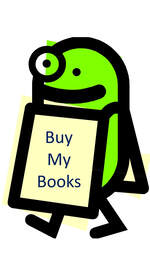 Let’s say you live in a house and on the wall outside your house you hang a loudspeaker. Inside you have a microphone connected to the speaker (for the nerds, yes it is connected through an amplifier). Then you close the curtains so you can’t see the street. Now you stand in your house, speaking into the microphone saying “buy my book” over and over again. Will this sell your book? First of all, lots of people who might buy your book won't even come along that street, they'll be using another street entirely, so they will never hear your message. Then you don’t know if there are any people outside your house to hear your announcement. At some times of the day the street might be quite busy, but at others it will be empty. Even if people are there, you don’t know if they read books and, finally, even if they read books, you don’t know what sort of books they read. If they don’t read books like yours then you are wasting your time. "your announcements are getting lost amongst theirs" But it’s worse than that. Because there are 99 other houses in your street and in each one of them there lives another author and all 100 of you are doing exactly the same thing, so your announcements are getting lost amongst theirs and theirs are getting lost amongst yours. And that is why social media marketing fails for so many authors. Which means that just posting on Facebook, Instagram or Twitter is probably not going to sell you many books.  Which brings me to paid posting services. There are dozens, even hundreds, of online suppliers offering to Tweet your book to their millions of followers – at a price. The problem is that they are doing exactly what I have described in my analogy. Not only that, they are trying to add even more authors to their list, which makes the noise worse, not better. Which means you are paying them to do something that you already know doesn’t work. It doesn’t matter how many followers they have, or how many likes their FB and Insta accounts get, if they aren’t reaching the right people, they aren’t selling your book for you. "you are paying them to do something that you already know doesn’t work" Our recommendation is not to pay for services like that. But if social media marketing doesn’t work, why do so many businesses spend so much money on it? Because it does work, but not if you just stand in your house shouting “buy my book”. There is a science behind social media marketing and if you learn how to use that science, your book will sell.  If you have been following this series of blogs you will know that we are great advocates of “learning” and this is something else you can learn about. This course with Future Learn is free and serves as a good starting point for learning how to use social media marketing. It is only two weeks of study (you could complete it in a day if you felt like it) and you can sign up from anywhere in the world. And it isn’t just for authors – any small business can use social media marketing. In last week’s blog I listed the 6Ps of marketing and I said I’d return to them. So, I’m going to start with that first P – product and how it relates to social …. Tell you what, let’s call it SMM for short. What is your product? 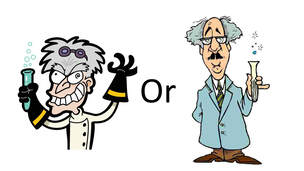 Yeeeees, it’s a book, we know that. But is it just a book? For example, is it fiction or non-fiction? There’s no point in trying to sell a fiction book to someone who only reads non-fiction. Next, what genre is it? Some people read only one genre, some read a few different genres and some people read anything and everything. The problem is, you have to assume that they only read one genre and that it is yours.
they may be people just like you. But if you write in several different genres, you may have several different types of reader and you need to address each one in a different way. You won’t attract a reader of Young Adult (YA) fiction in the same way as you attract a reader of military history – they are two very different people. This is called audience targeting. If you know what your audience looks like and behaves like, then you can target them better. You can be online, on Twitter for example, at the same time of day as them. You can shape your marketing messages in a way that appeals to them. Most importantly, you can engage with them.  Because social media marketing isn’t about advertising, it is about engagement. No, not that sort of engagement. If you can establish a relationship with your target audience – even if it is only via a social media platform - they are more likely to take an interest in you and more likely to take an interest in your work. I’ll give you a frinstance (as my Mum called it). If your ideal reader is likely to have an interest in brewing craft beer and you have an interest in brewing craft beer, you can engage with them by talking about craft beer brewing. The fact that you are also an author becomes incidental. One day they may decide to look at your profile on whatever social media platform you are using and then they will discover that you're an author (it does say you're an author, doesn't it?), at which point they may take a look at your book(s). But you haven’t forced it on them.
to themselves “Oh, I didn’t realise he/she was an author as well as being a craft beer brewing enthusiast. I wonder what his/her books are like?” and they might take the time to find out. Because you have done your research on your “ideal” audience, the chances are they will read the sort of books you write and that’s the battle half won. But most importantly, engagement builds up your audience numbers, because you will be joined by more people who want to talk about craft beer brewing (or whatever), which means more people see what you post on social media. This is what is known as "organic growth". The opposite to organic growth is "paid growth", which is where you pay to reach an audience, usually through advertising. Does this sound like manipulation? We’d prefer to think of it as understanding human behaviour. In any business, of any size, there are people earning salaries far bigger than mine who are “understanding human behaviour” and using it to sell you something. At least you do have a genuine interest in craft beer brewing (or whatever).  So, a bit of homework for you for next week. Draw a pen picture of your ideal reader. Here’s a few things for you to consider:
 Identifying your target audience is an important first step in your marketing strategy. Strategy: that’s a big scary word. Don’t let it scare you though because it is far easier to understand than you may think. It is the implementation of the strategy that is actually the hard part. But I’m getting ahead of myself because we'll be discussing strategy in more detail in our next blog. See you next week (I hope). If you have enjoyed this blog and found it informative, make sure you don't miss any future editions by signing up to our newsletter. Just click the button. |
AuthorThis blog is compiled and curated by the Selfishgenie publishing team. Archives
March 2025
|
||||||||||||||||
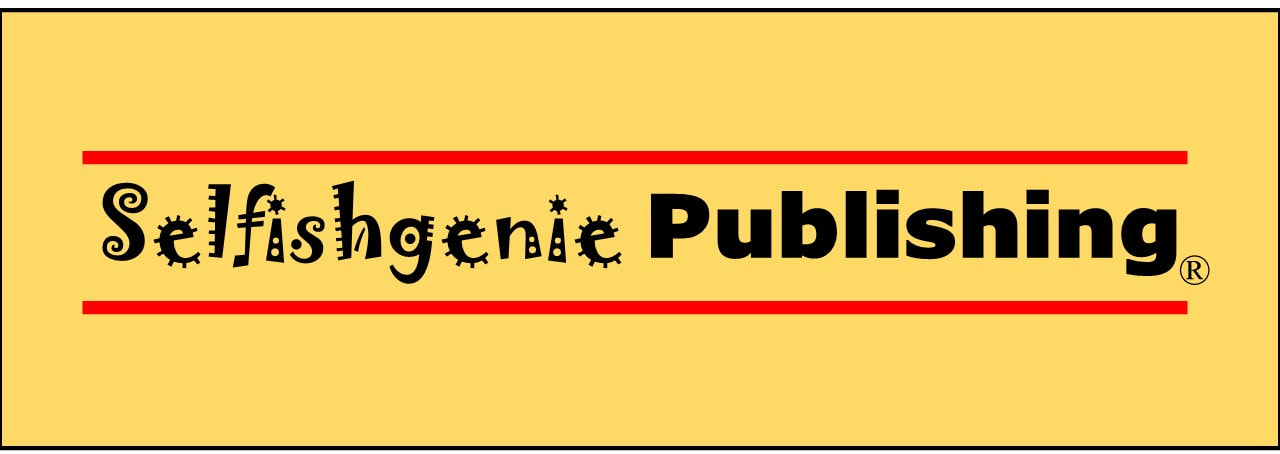
 RSS Feed
RSS Feed